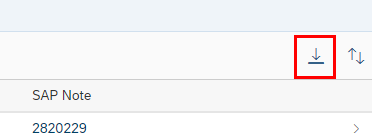This article explains how to install the Simplification Item (SI) Report.
Prerequisites
Before you proceed with the below instructions, install the latest version of these notes.
The following notes must be installed on both your checked system and the Production system.
Panaya strongly recommends installing the most up-to-date versions of the notes.
- Required
- 2399707 *- Simplification Item Check
- 2502552 *- S4TC - SAP S/4HANA Conversion & Upgrade New Simplification Item Checks
* These notes and the Simplification Item Catalog should be installed and updated to its latest version. In case the conversion process has begun and you have finalized your Development system, these notes versions and the development (checked system) should be frozen.
- Recommended

What systems should be installed with the SI?
The SI should be installed on the checked system (The one running the ETL Extractor) and the productive system. If you are going to use a copy of your production system, be sure to also review SAP note 2568736 - SAP Readiness Check for SAP S/4HANA - copy ST03N data.
See also
Downloading the Simplification Database
There are 2 methods to download the Simplification Item Catalog
Method 1
- Navigate to https://launchpad.support.sap.com/#sic
- Select your preferred version of the Product

- Click on
 to download the catalog
to download the catalog
Method 2
- Navigate to SAP Software Download Center
- Download CCMSIDB
- Select the relevant ZIP file and click on Download Basket
Method 3
- Start transaction SE38 and execute program /SDF/RC_START_CHECK
- Click on Download Latest Simplification Item Catalog

Importing the Simplification Database
- Start transaction SE38 and execute program /SDF/RC_START_CHECK
- Select to Upload Simplification Item Catalog

- Select the ZIP downloaded in the previous steps
This article is part of our S/4HANA Setup Guide